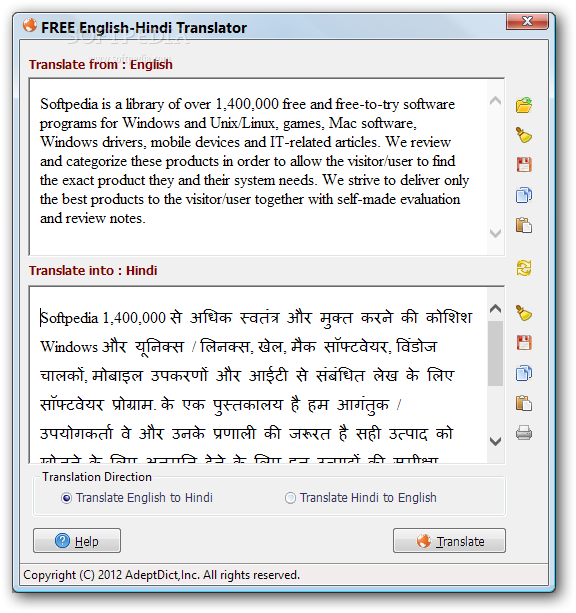

(a) to a State or Union Territory in Region "B" or to any office (not being a Central Government office) in such State or Union Territory shall ordinarily be in Hindi and if any communication is issued to any of them in English, it shall be accompanied by a Hindi translation thereof (2) Communications from a Central Government office :. (1) Communications from a Central Government office to a State or a Union Territory in Region "A" or to any office (not being a Central Government office) or person in such State or Union Territory shall, save in exceptional cases, be in Hindi, and if any communication is issued to any of them in English it shall be accompained by a Hindi translation thereof. "Working knowledge of Hindi" means working knowledge of Hindi as described in rule 10ģ. "Region C" means the States and the Union Territories other than those referred to in clauses (f) and (g) (g) "Region B" means the States of Gujarat, Maharashtra and Punjab and the Union Territory of Chandigarh (f) "Region A" means the States of Bihar, Haryana, Himachal Pradesh, Madhya Pradesh, Rajasthan and Uttar Pradesh and the Union Territories of Delhi and Andaman and Nicobar Islands (e) "Proficiency in Hindi” means proficiency in Hindi as described in rule 9 (d) "Notified Office" means an office notified under sub-rule (4) of rule 10 (c) "Employee" means any person employed in a Central Government office

However, while Hindi has Sanskrit roots, Urdu has Persian influence. Orally, Hindi and Urdu are quite similar and can be mostly understood by speakers of either language. Some of these countries are Mauritius, Fiji, Singapore, Trinidad and Tobago, Uganda, Nepal, Bangladesh, and Pakistan. Besides migration, the historical connect of many countries with India has rooted the language there. The large migrations have been to the United States, United Kingdom, South Africa, Australia, New Zealand, Canada, United Arab Emirates, and Saudi Arabia. Large-scale migration of people of Indian origin to other countries has spread the language worldwide and that caused demands of English to Hindi translation have peaked in especially English-speaking countries quite much. Hindi language is mainly spoken in North India but with continual migration of North Indians to other parts of the country, it is understood and spoken in other states as well. The pronunciation of the words is done as it is written, hence there is no ambiguity in its spelling unlike in most other languages. There are no uppercase or lowercase characters in the script.

It’s a phonetic script with 47 characters, 33 consonants, and 14 vowels.

However, the Devanagari script for the present-day Hindi was seen for the first time in the 11th century and continues to this day. For instance, pencil, school, bottle, fees, sentry from English, chabi, ananas, balti, padre from Portuguese, and sabzi, duniya, waqt, shahar, deewaar,bulbul, durbin, hakikat, koshish from Persian, Turkish, and Arabic.Įarly evidence of written Hindi comes in the Brahmi script in 4th century AD. Many loanwords that have become part of daily discourse have come from other languages. This has been because of close historical links between India and countries where the other languages are spoken. The main impact has been from English, Arabic, Persian, Dravidian languages, Turkish, and Portuguese. The influence of various languages from around the world is evident from its increasing vocabulary. That is the main reason the language has evolved over time and English to Hindi translation demands have increased. Almost 258 million people in India alone speak the language while there are more than 500 million all over the world who do so. It is the fourth largest spoken language in the world. They all come under the umbrella term of Hindustani. There are many dialects of the language such as Avadhi, Brajbhasha, Khari Boli, Urdu, Haryanvi, Bundeli, and colloquial present-day Hindi etc. It is part of the Indo-European group of languages. It has its roots in the ancient language of Sanskrit.


 0 kommentar(er)
0 kommentar(er)
